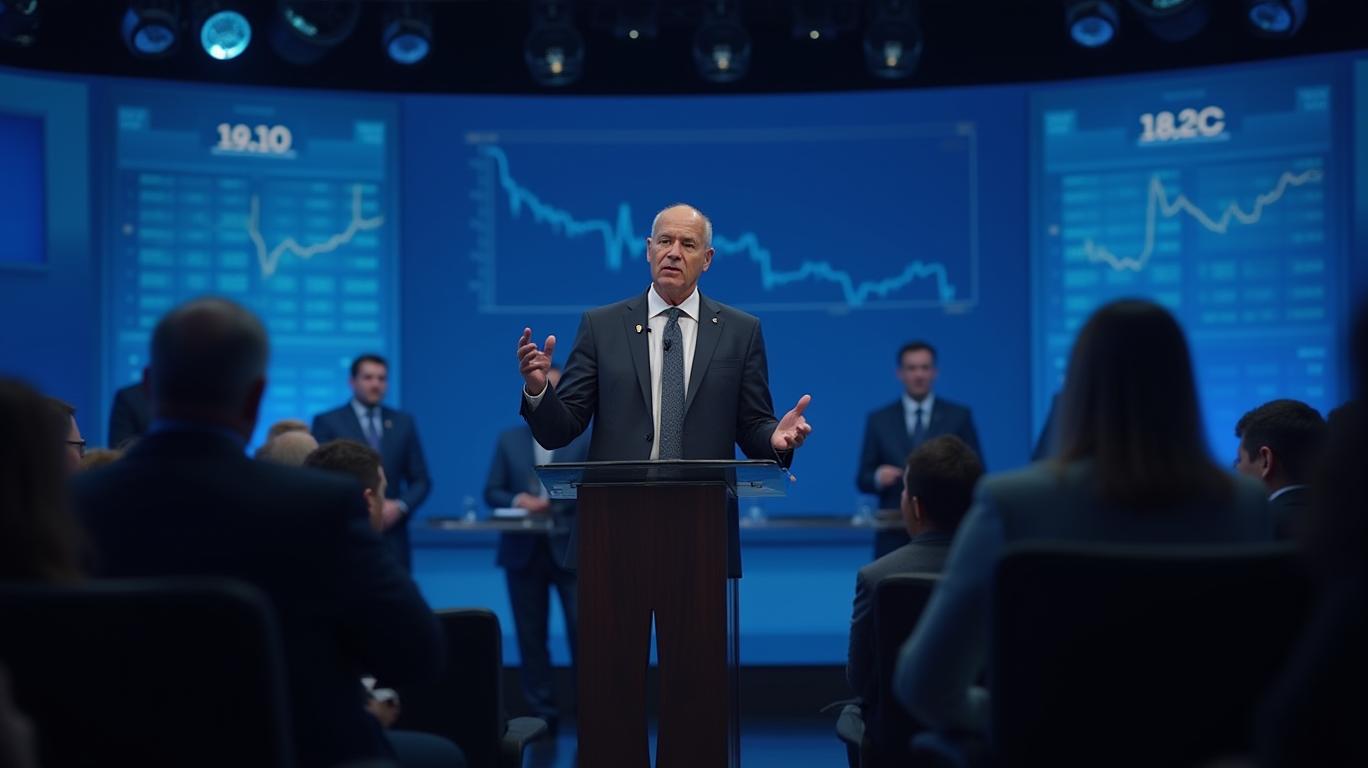Tariffs Take a Bite: How GM's Revised 2025 Guidance Signals a New Era of Uncertainty
The automotive giant general motors (GM) has issued a stark warning about the escalating impact of tariffs on its financial outlook, slashing its 2025 net income guidance by nearly $3 billion in a May 2025 press release. The revisions, driven by a 25% tariff on imported auto parts, expose vulnerabilities in global supply chains and highlight the precarious balance between corporate planning and shifting trade policies. Investors now face a critical question: Can GM navigate these headwinds, or will tariffs derail its growth trajectory?
The Tariff Tsunami: Costs and Consequences
The 25% tariff on imported auto parts, set to take effect May 2, 2025, has become a fiscal anchor for GM. The automaker now estimates tariff-related costs will range between $4.0 billion and $5.0 billion in 2025—a staggering figure that directly eats into profitability. This burden forced GM to revise its net income guidance to $8.2 billion–$10.1 billion, down from a previous range of $11.2 billion–$12.5 billion. The adjusted EPS guidance ($8.25–$10.00) now sits nearly 25% below earlier expectations, underscoring the severity of the blow.

The tariff impact extends beyond net income. GM also reduced its adjusted automotive free cash flow guidance to $7.5 billion–$10.0 billion, a $3 billion drop from prior estimates. While the company maintains its $10–$11 billion capital expenditure plan—including investments in its battery cell joint venture—these cuts reflect a prioritization of long-term strategies over short-term profitability.
Ask Aime: What's the future of General Motors in the face of new tariffs?
Market Reaction: A Rollercoaster of Uncertainty
Investors initially reacted positively to the revised guidance, with GM’s stock rising 2.5% in premarket trading. However, the broader picture paints a bleaker reality: shares had already plummeted 15.1% year-to-date through May 2025, far outpacing the S&P 500’s 5.3% decline. This divergence suggests the market is pricing in prolonged uncertainty around trade policies.
GM’s delayed April 2025 analyst call—postponed to refine tariff analysis—further fueled investor anxiety. Even with potential tariff relief for certain parts, as reported by the Wall Street Journal, the lack of clarity on broader exemptions has left investors wary. CEO Mary Barra’s emphasis on ongoing discussions with the Trump administration hints at a reliance on policy changes, but such reliance is risky in an era of geopolitical volatility.
The Bigger Picture: Trade Wars and Supply Chain Realities
GM’s struggles are a microcosm of a broader industry challenge. Automakers increasingly face the dilemma of reconfiguring global supply chains to avoid tariffs—a costly endeavor requiring reshoring or near-shoring of production. For GM, which sources parts from countries like Mexico and China, the tariff burden could force tough decisions: absorb costs, pass them to consumers (risking demand), or restructure operations.
The $4–$5 billion tariff estimate alone represents ~30–40% of GM’s revised 2025 net income range. In other words, tariffs could swallow nearly half of the company’s bottom line. This math leaves little room for error in other areas of the business, such as competition from electric vehicle (EV) upstarts or rising raw material costs.
Investment Implications: Proceed with Caution
GM’s revised guidance paints a cautionary picture for investors. While the company’s capital spending on battery technology and EVs positions it for future growth, the near-term financial pain from tariffs is undeniable. Key takeaways:
- Tariff Risk is Structural: The 25% tariff on auto parts isn’t a temporary blip. As long as trade policies remain unstable, GM’s earnings will remain vulnerable.
- Valuation Matters: At current stock levels, investors are likely pricing in some tariff relief. A failure to secure exemptions could lead to further declines.
- Free Cash Flow is a Litmus Test: The $7.5–$10 billion free cash flow guidance must be met to fund innovation without overleveraging the balance sheet.
Conclusion: Navigating the Crossroads
GM’s revised guidance is a wake-up call about the escalating costs of trade friction. With tariffs absorbing billions and investor confidence shaky, the automaker’s success hinges on two factors:
- Policy Clarity: A swift resolution to trade disputes, particularly exemptions for critical auto parts.
- Operational Agility: Rapid supply chain adjustments to mitigate tariff impacts without stifling innovation.
The numbers are stark: the $4–$5 billion tariff bill could erase over 40% of GM’s 2025 net income. Even with its $10 billion capital budget, the company’s ability to grow shareholder value is now contingent on external factors beyond its control. For investors, this is a high-risk bet—unless GM can pivot its supply chain or secure relief faster than the market expects.
In the end, GM’s story is a cautionary tale for industries reliant on global trade. As tariffs reshape corporate strategies, the era of predictable earnings guidance may be coming to an end.










